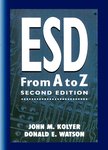版权所有:内蒙古大学图书馆 技术提供:维普资讯• 智图
内蒙古自治区呼和浩特市赛罕区大学西街235号 邮编: 010021

丛 书 名:The Springer International Series in Engineering and Computer Science
版本说明:1
I S B N:(纸本) 9780792391081;9781461288282
出 版 社:Springer New York NY
出 版 年:1000年
页 数:XVIII, 254页
主 题 词:Control, Robotics, Mechatronics Computer Imaging, Vision, Pattern Recognition and Graphics Artificial Intelligence
摘 要:If you have ever hiked up a steep hill to reach a viewpoint, you will know that sensing can involve the expenditure of effort. More generally, the choice of which movement an intelligent system chooses to make is usually based on information gleaned from sensors. But the information required to make the motion decision may not be immediately to hand, so the system . first has to plan a motion whose purpose is to acquire the needed sensor information. Again, this conforms to our everyday experience: I am in the woods and don t know which direction to go, so I climb up to the ridge to get my bearings; I am lost in a new town, so I plan to drive to the next junction where there is sure to be a roadsign, failing that I will ask someone who seems to be from the locality. Why, if experiences such as these are so familiar, has the problem only recently been recognised and studied in Robotics? One reason is that until quite recently Robotics research was dominated by work on robot arms with limited reach and fixed in a workcell.